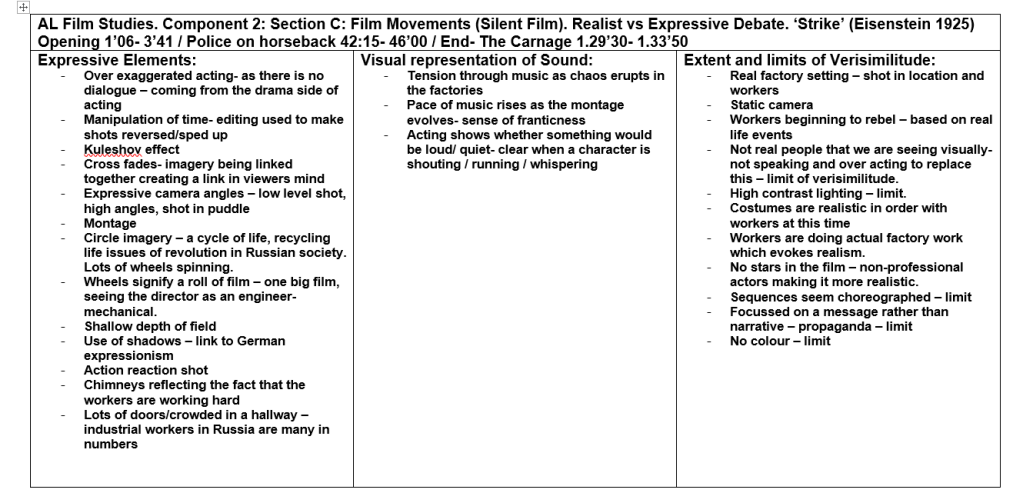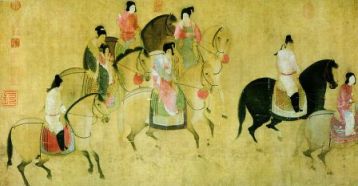AL Film Studies. Component 2: Section C: Film Movements (Silent Film). Realist vs Expressive Debate. ‘Strike’ (Eisenstein 1925) Opening 1’06- 3’41 / Police on horseback 42:15- 46’00 / End- The Carnage 1.29’30- 1.33’50


Questions, select one for 20 marks:
- How do the aesthetics of the film you have studied reflect the production context of the film?
- Why might expressive tendencies have emerged within the silent film period?
- Discuss how either age, gender or ethnicity is represented in the film you have studied.
- Explore how film form devices are used to convey messages in the film you have studied
2. planning
- expressive tendencies may have emerged for the cause of using an art form to promote propaganda, as well as drawing in the audience through editing techniques , particularly soviet montage
- rather than valuing entertainment it uses expressionism to make a point and give off an intended message
- uses plotless cinema – no individual specific characters or character development, uses lenins quote to promote propaganda and reinforces this through the lack of protagonist and instead a mass collective of individuals
- different editing techniques used like :
- kuleshov effect
- montage
- manipulation of time – reversing shots and speeding them up
- action reaction shots
- a range of experimental camera angles – high angle, low level shots, a reflective shot in a puddle which then reverses the time
- eisenstein uses these techniques in order to affect the viewer with emotions and feelings, as well as shock. He combines all of these expressive tendencies to make the audience leave with psychological influence.
- the continuous use of circular imagery through the wheels and clocks in the factory play a part in expressive tendencies as they are ahead of Eisensteins time. He uses the wheels to portray how the narrative is circular, the cycle of how Russian society will have multiple revolutions due to the workers being treated unfairly. The wheel is the motif of revolutionary progress
- The wheels are also representative of the mechanics of filmmaking, imitating a roll of film, Einsenstein as the ‘engineer’ of the film, as making a film in 1925 would have been a lot of work and very mechanical.



